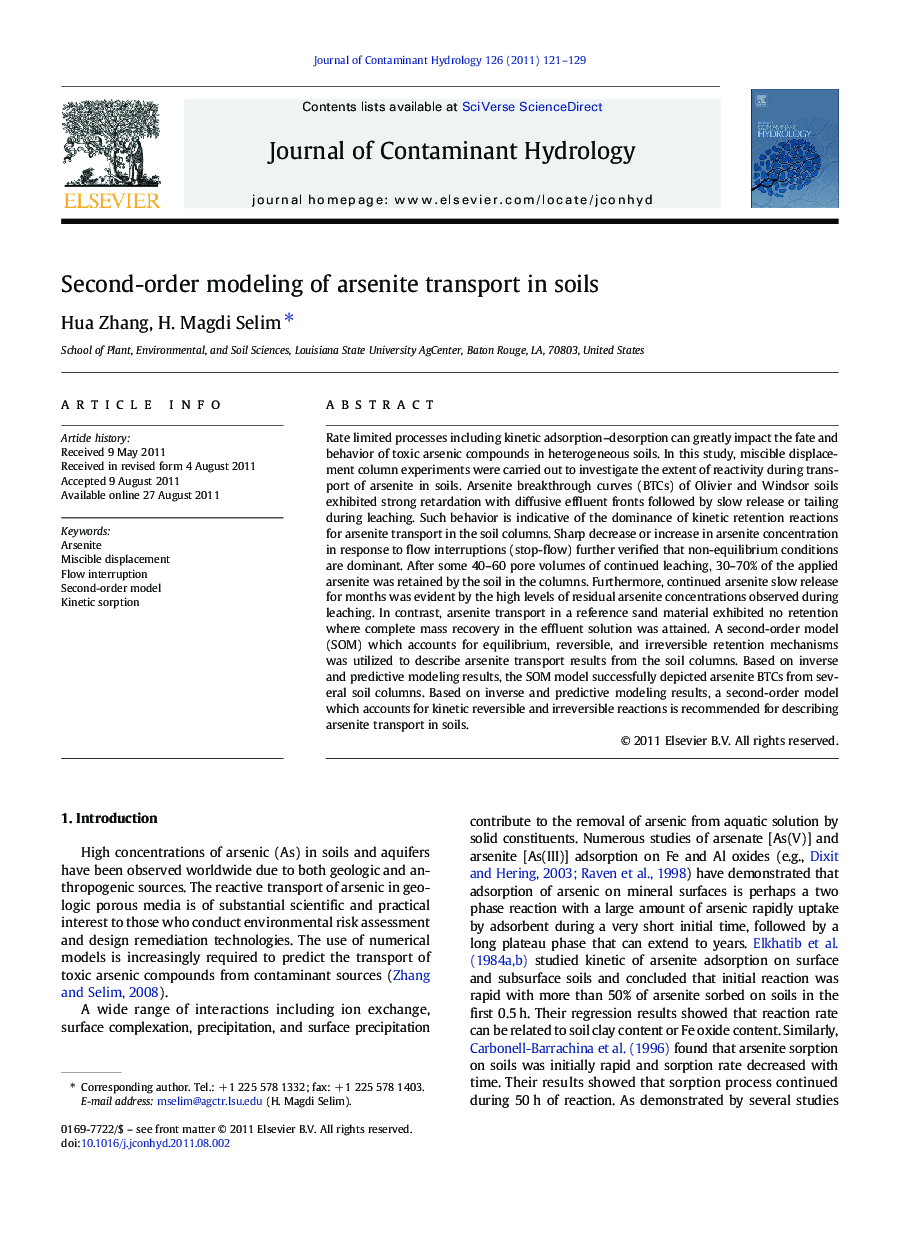| Article ID | Journal | Published Year | Pages | File Type |
|---|---|---|---|---|
| 4546924 | Journal of Contaminant Hydrology | 2011 | 9 Pages |
Rate limited processes including kinetic adsorption–desorption can greatly impact the fate and behavior of toxic arsenic compounds in heterogeneous soils. In this study, miscible displacement column experiments were carried out to investigate the extent of reactivity during transport of arsenite in soils. Arsenite breakthrough curves (BTCs) of Olivier and Windsor soils exhibited strong retardation with diffusive effluent fronts followed by slow release or tailing during leaching. Such behavior is indicative of the dominance of kinetic retention reactions for arsenite transport in the soil columns. Sharp decrease or increase in arsenite concentration in response to flow interruptions (stop-flow) further verified that non-equilibrium conditions are dominant. After some 40–60 pore volumes of continued leaching, 30–70% of the applied arsenite was retained by the soil in the columns. Furthermore, continued arsenite slow release for months was evident by the high levels of residual arsenite concentrations observed during leaching. In contrast, arsenite transport in a reference sand material exhibited no retention where complete mass recovery in the effluent solution was attained. A second-order model (SOM) which accounts for equilibrium, reversible, and irreversible retention mechanisms was utilized to describe arsenite transport results from the soil columns. Based on inverse and predictive modeling results, the SOM model successfully depicted arsenite BTCs from several soil columns. Based on inverse and predictive modeling results, a second-order model which accounts for kinetic reversible and irreversible reactions is recommended for describing arsenite transport in soils.
► Kinetic retention dominate arsenite transport in the soil columns. ► Changes in concentration due to stop-flow verify non-equilibrium conditions. ► A second-order model is recommended for describing arsenite transport in soils.
